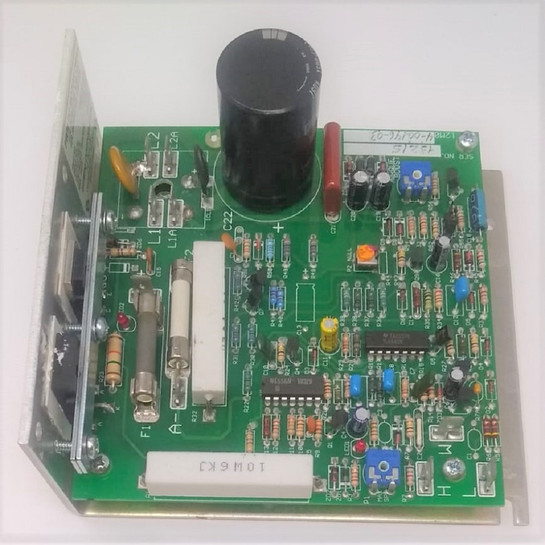Treadmill Motor Controllers How Do They Work?
Demystifying Treadmill Motor Controllers: How They Work and What You Need to Know
As someone who has spent countless hours on a treadmill, I have always been curious about how these machines work. Specifically, I've always been intrigued by the motor controllers that are responsible for powering the treadmill. In this article, I'll be taking a deep dive into these controllers, explaining how they work, the different types available, and how to maintain and troubleshoot them. If you're someone who is looking to upgrade their treadmill motor controller or simply wants to know more about how these machines operate, then keep reading.
Introduction to Treadmill Motor Controllers
Before we dive into the specifics of how treadmill motor controllers work, let's start with a basic introduction. In simple terms, a motor controller is an electronic device that is responsible for regulating the speed and torque of an electric motor. In the case of treadmills, the motor controller is what controls the speed of the walking belt.
The Basics of How Treadmill Motor Controllers Work
Now that we have a basic understanding of what a motor controller is, let's take a closer look at how treadmill motor controllers work. There are two main types of motor controllers: AC and DC. AC (alternating current) motors are typically found in commercial treadmills, while DC (direct current) motors are more common in home treadmills.
AC motors work by using a rotating magnetic field to create movement in the motor. The speed of the motor is controlled by varying the frequency of the electrical current that is supplied to the motor. DC motors, on the other hand, work by using a direct current to create movement in the motor. The speed of the motor is controlled by varying the voltage that is supplied to the motor.
Types of Treadmill Motor Controllers
There are two main types of treadmill motor controllers: PWM (pulse width modulation) and SCR (silicon-controlled rectifier) controllers. PWM controllers are more common in newer treadmills, while SCR controllers are typically found in older models.
PWM controllers work by rapidly turning the power to the motor on and off, which allows for precise control over the speed of the motor. SCR controllers, on the other hand, work by gradually increasing or decreasing the amount of power that is supplied to the motor. While PWM controllers are more efficient and offer more precise control over the motor, SCR controllers are simpler and more reliable.
Understanding the Functions of Treadmill Motor Controllers
The main function of a treadmill motor controller is to regulate the speed of the walking belt. However, there are other functions that these controllers are responsible for as well. For example, many motor controllers have safety features built-in, such as overcurrent and overvoltage protection. Additionally, some motor controllers have built-in diagnostics that can help identify and troubleshoot issues with the treadmill.
Maintaining and Troubleshooting Treadmill Motor Controllers
Like any electronic device, treadmill motor controllers require regular maintenance to keep them running smoothly. One of the most important things you can do to maintain your motor controller is to keep it clean and free of dust and debris. Additionally, you should periodically check the wiring and connections to make sure everything is secure.
If you're experiencing issues with your treadmill motor controller, there are a few things you can try before calling in a professional. First, check the wiring and connections to make sure everything is properly connected. If that doesn't solve the issue, you may need to replace the motor controller. Looking for replacement treadmill motor controllers TreadmillPartsZone
Upgrading Your Treadmill Motor Controller
If you're looking to upgrade your treadmill motor controller, there are a few things you should consider. First, make sure the motor controller is compatible with your specific treadmill model. Additionally, look for a controller that offers the features you need, such as precise speed control and safety features. Most treadmill motor controller can only be replaced with exact replacement OEM parts.
Choosing the Right Treadmill Motor Controller for Your Needs
When choosing a treadmill motor controller, there are a few factors you should consider. First, think about the specific features you need, such as precise speed control or safety features. Additionally, consider the type of motor controller you need, such as PWM or SCR.
Common Questions About Treadmill Motor Controllers
Here are some common questions people have about treadmill motor controllers:
- Can I upgrade the motor controller on my treadmill? Usually not.
- How do I know if my motor controller is failing? Check manufacturer diagnosis.
- What type of motor controller is best for my treadmill? Original OEM.
Future Developments in Treadmill Motor Controllers
As technology continues to advance, we can expect to see some exciting developments in the world of treadmill motor controllers. For example, we may see controllers that are even more efficient and precise, or controllers that are more integrated with smart technology.
Conclusion
In conclusion, treadmill motor controllers are a critical component of these machines, responsible for regulating the speed of the walking belt. By understanding how these controllers work, the different types available, and how to maintain and troubleshoot them, you can ensure that your treadmill runs smoothly and safely. Whether you're looking to upgrade your treadmill motor controller or simply want to know more about how these machines operate, I hope this article has been informative.


